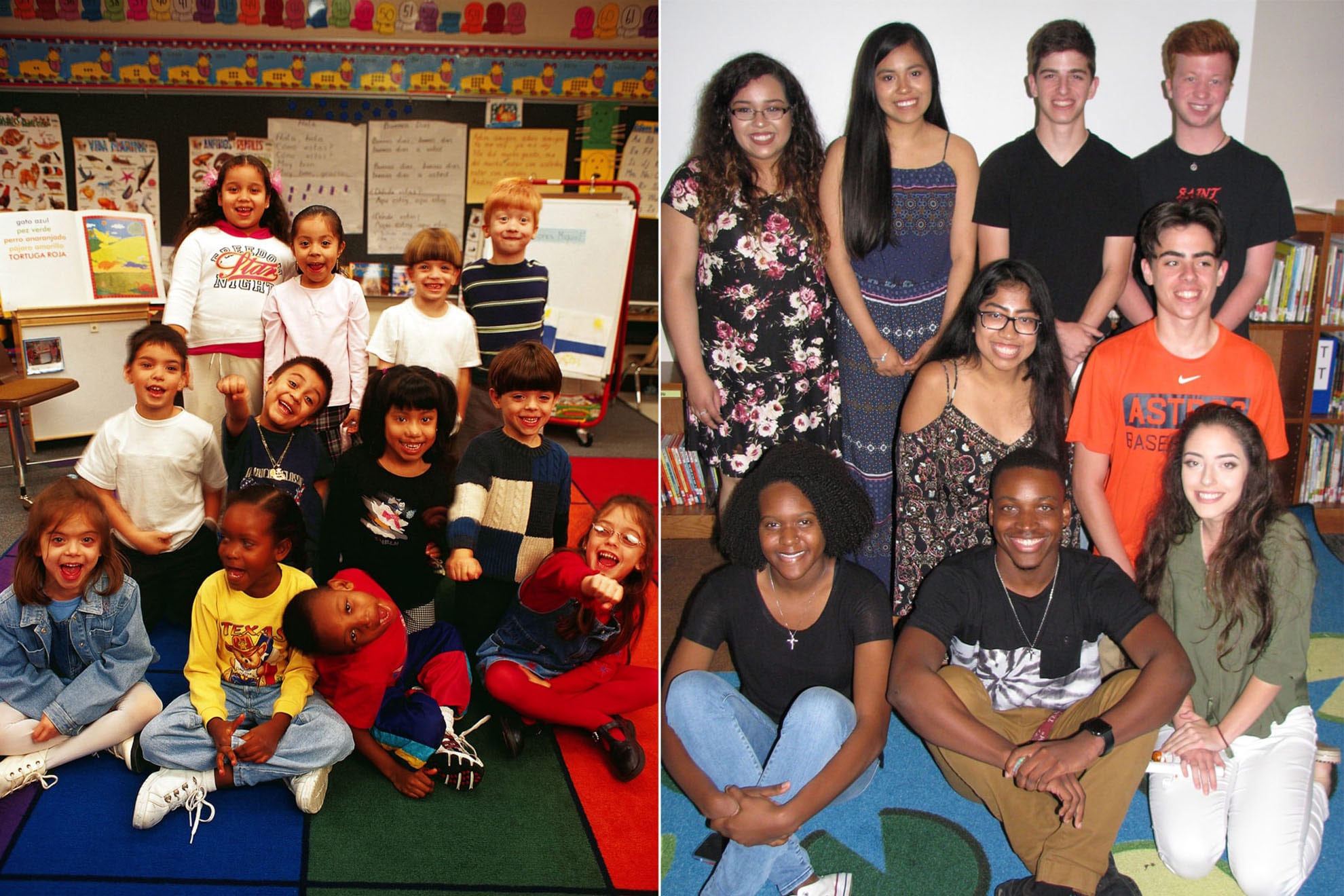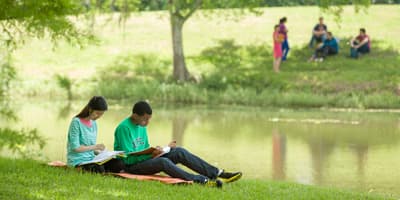- Future Students
- How to Apply
- Visit UHCL
- Admitted Students
- Tuition, Costs and Aid
- Degrees and Programs
- Contact Admissions
- More Information
- Current Students
- Class Schedule
- Academic Calendar
- Advising
- Events
- Library
- Academic Resources and Support
- Student Services and Resources
- More Information
- Alumni
- Lifetime Membership
- Alumni Events
- Update Your information
- Awards and Recognitions
- Give to UHCL
- More Information
UHCL, CCISD celebrate bilingual immersion program milestone
June 8, 2017 | Jean Rudnicki

While every high school graduation is special, this year’s rite of passage marks
a significant milestone for a partnership that was forged 15 years ago between the
Clear Creek Independent School District and the University of Houston-Clear Lake.
The students who began as kindergarteners in CCISD’s first two-way immersion program
are walking this year, and the district and university representatives who helped
launch the dual-language program are as proud as parents.
In 2002 the two entities joined together to establish McWhirter Elementary School in Webster, Texas, as a Professional Development Laboratory School. It was an innovative partnership intended to help a low-performing school improve its academic performance. Several novel initiatives were implemented at McWhirter, which have since become standard procedures throughout the CCISD school district.
Initiatives include instructional or academic coaches who are lead teachers without classrooms of their own. Instead, they work side-by-side with classroom teachers, modeling lessons and helping them to become stronger educators. The concept was called embedded professional development. In the mid-2000s it was a new and unique approach honing teachers’ skills, which traditionally had been reserved for after hours, weekends or summers.
Today, these coaches are in all CCISD elementary schools. The program is now being rolled out throughout the district’s secondary schools as well.
However, no initiative was as controversial as the dual-language, two-way, immersion program, which placed native English-speaking children in classrooms with native Spanish-speaking children where classes were taught predominantly in Spanish.
“Initially there was resistance,” said UH-Clear Lake Professor Emeritus James Sherrill, who served as the College of Education’s associate dean at the time. He co-chaired the Professional Development Laboratory School steering committee with then-Assistant CCISD Superintendent Sandra Mossman.
“No one believed it would work. The trouble is, we were trying to judge language learning by adult standards,” he said. “I couldn’t learn it. But it will work for little Johnny.”
UH-Clear Lake Professor of Bilingual and Multicultural Education Laurie Weaver also served on the steering committee. She was charged with improving McWhirter’s bilingual program. Weaver presented the committee with stacks of research data supporting the two-way immersion concept.
“Research shows two-way immersion programs result in the best academic achievement for English language learners,” she said. “And, it just so happens that it’s good for English-speaking kids, too.”
In fact, the data show that native English speakers often meet or exceed the performance of their peers who participate in English-only classrooms, with the added benefit of being bilingual.
“The performance level in kindergarten, grade 1 and 2 is behind, but by the time they reach grade 5 they are at par or above,” Sherrill explained.
When McWhirter Principal Michael Marquez joined the team 10 years ago, the first two-way immersion class had already completed kindergarten, first and second grade and was beginning third.
“These are the tough years,” he said. “Not only do we need to meet the children’s language needs, but we also need to meet their academic needs – and, oh by the way, we’re accountable by the State for TAKS (now called STAAR testing),” he said. “That assessment from the State helped validate that it was a great program.”
Marquez said that some students, when taught and tested in their native English or Spanish only, sometimes did not pass TAKs. “Then we had this group of kids that took it (TAKS) in a second language and who were successful. So it was a complete validation that we were on the right track.”
Research supports the cognitive benefits of bilingualism, Weaver says.
“Whether Spanish speaker or English speaker, when you learn two languages you tend to be better at problem solving,” she said. “You are used to having two languages coming at you, so you are sharper. And there is recent research that shows bilingual people are less likely to develop Alzheimer’s. They think it has something to do with the brain, and how you are using the brain, and using the two languages.”
So how does a two-way immersion program work? First of all, kindergartners aren’t given a list of verbs to conjugate. Instead, the teachers – including Margaret Parks, who has been with the program since the beginning and will retire this year – use a repertoire of strategies to make themselves understood, such as body gestures, pictures and acting out. Also, kids are assigned buddies so an English speaker and a Spanish speaker work together. Some Spanish students who know some English even become mediators and interpreters to an extent.
Children learn more from their peers than from their teachers, Marquez noted. For example, he says, if you have two children who are exactly alike in all details except for the type of classes, the student in the two-way immersion program will have greater English ability and better proficiency than the student in the bilingual class. “The native Spanish speaker in two-way immersion has been exposed to English by peers. The one in bilingual education, their model of the English language is the teacher. So tell me kids don’t make a difference.”
“We talk a lot about language, but the other part is about diversity and working with kids who are different from you,” Weaver said.
Marquez agrees. “The biggest thing that the kids get out of two-way immersion is the interaction with another population of students that they may not normally have that interaction with. That really is the biggest difference.”
Liseth Torres, a graduating Clear Lake High School senior, began the first two-way immersion class as a native Spanish speaker. She is the first in her family to graduate high school and attend college.
“I am grateful for the program,” she said. “It really helps to understand how two cultures come together and you can still be part of both and not just one.”
As with other Professional Development Laboratory School initiatives which began at McWhirter and were implemented at other CCISD schools, two-way immersion classes are now taught at Stewart Elementary and Landolt Elementary, and they will begin at Brookwood Elementary in the fall.






